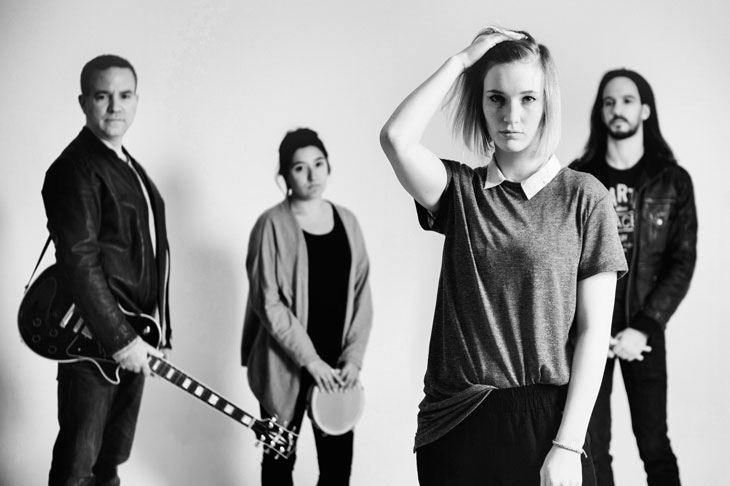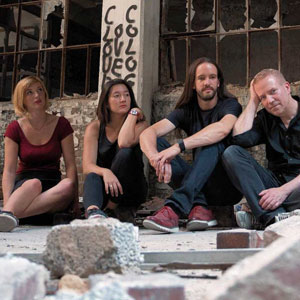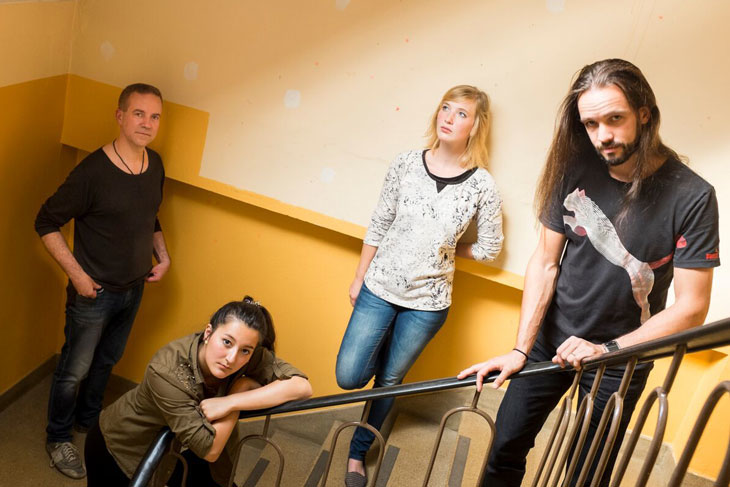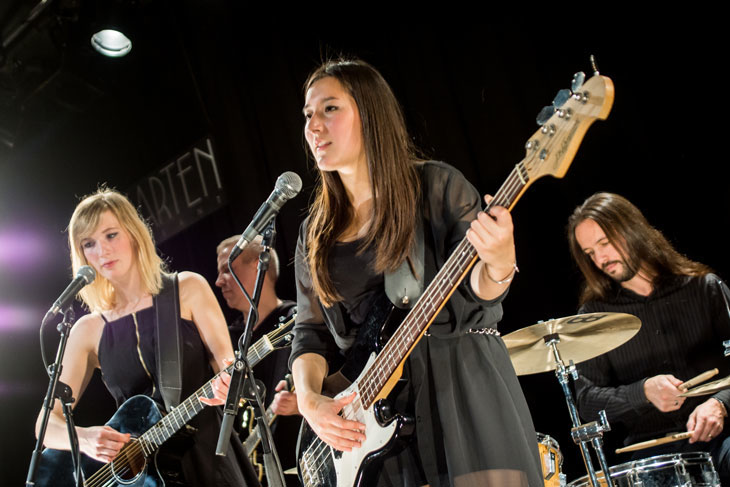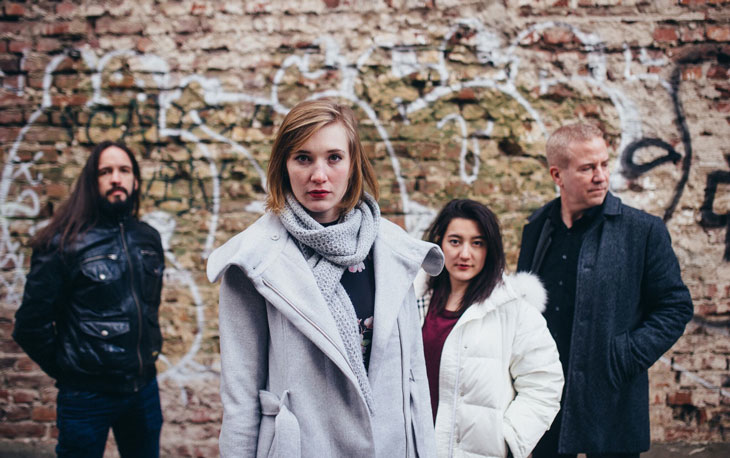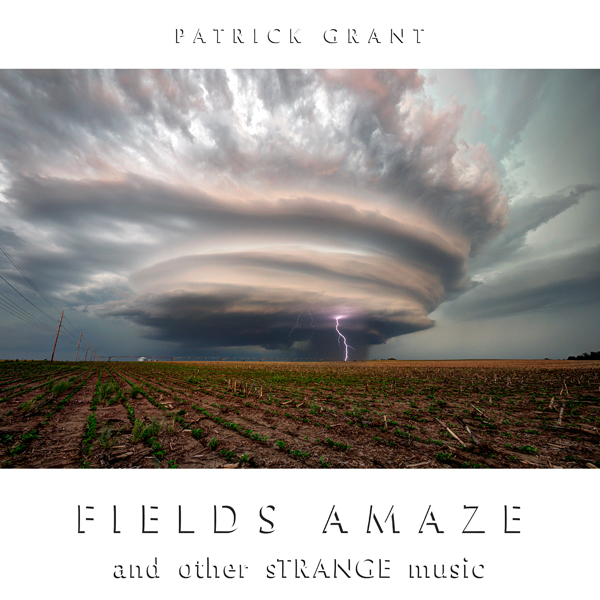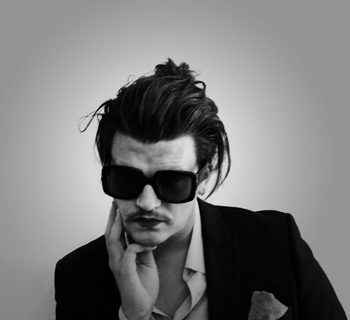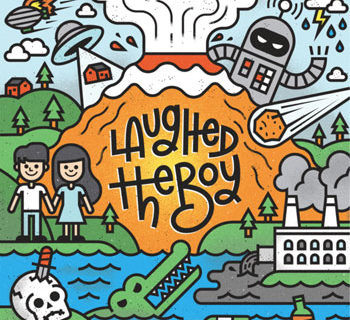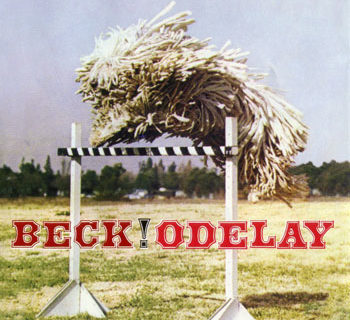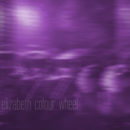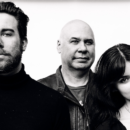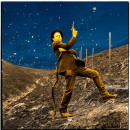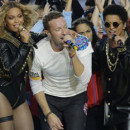Because I’m a long-time zealous fan of music, I like to listen to anything and everything coming down the pipeline. Subjectively, that means I listen to beaucoup mediocre music, and enough garbage to overcrowd a landfill. The number of theorizing dilettantes out there calling themselves musicians is beyond belief. They’ve fallen prey to the ludicrous notion promulgated by shows like America’s Got Talent, which is little more than contrived marketing. However, when something superb comes along, all that listening pays off. Case in point is Just Like Honey (JLH), whose latest album, Dreamland, is aptly named because it’s like an enjoyable dream: tantalizing and delightful.
The entire album is grand, which means there’s not a shoddy track on it. My favorites are “Trip to Nowhere,” “I Don´t Like the Girl I Am,” “Note To Self,” and “September Rain.” The whole album is full of lustrous, scintillating music guaranteed to beguile you. The melodies, muscular yet at the same time otherworldly, are worth the price of admission. And the vocals are to die for.
Right now, JLH calls Germany home, but insists they are not a “German band,” since their members hail from the USA, Germany, France, and Canada. JLH is composed of Darlene Jonasson (lead vocals, guitar, mandolin), Bianca Yang (lead vocals, bass, piano), Patrick Le Mar (guitars, bass, backing vocals), and Steve Le Mar (drums, percussion). Each is talented, but when they come together, their pooled gifts attain a vast transcendental power.
JLH is the brainchild of Patrick Le Mar, who knew exactly what he wanted the band to sound like before it even existed. He had the vision, but needed to bring it to fruition. Patrick’s half-brother, Steven, was a given as the drummer. So that meant two down, with two to go. Serendipity entered when Patrick met Bianca at the 2014 Glastonbury Festival. The final member of JLH, the foundation piece, as it were, was added after myriad jam sessions with a host of musicians. Darlene’s misty, wistful, angelic voice, akin to sonic sugar, was just what the doctor ordered.
JLH’s influences include bands like Slowdive, The House of Love, Ride, The Charlatans, Mazzy Star, Galaxie 500, and Codeine. With influences like these, it’s no wonder JLH’s sound is often called dream pop and/or shoegaze.
The dynamics of the band are interesting. According to Patrick, JLH operates on the principles of a “guided democracy,” while the other members maintain it’s more of a “benevolent dictatorship” than anything resembling a democracy, guided or otherwise. Yet they do concede that Patrick has the necessary know-how, so there’s little artistic tension. Still, it’s kind of ironic, since most of the band’s fans consider JLH to be a “female-fronted band” with a definite feminine persona.
Speaking of persona, JLH’s influences include bands like Slowdive, The House of Love, Ride, The Charlatans, Mazzy Star, Galaxie 500, and Codeine. With influences like these, it’s no wonder JLH’s sound is often called dream pop and/or shoegaze. JLH disagrees with such descriptions, especially the term shoegaze, which implies a decidedly retro vibe. They assert their sound is “pop music,” merging gorgeous slo-mo melodies with piercing guitars played through vintage amps with hefty doses of reverb and oodles of feedback. Two of their songs, “September Rain” and “How Does It Feel,” serve up alt-country aromas, which beyond a doubt disposes of the dream pop tag.
For what it’s worth, to me JLH has more in common with Florence + The Machine and The Cranberries than any other band or sound. JLH’s sound glows with suppressed energy, elegant vocal tones, and mysterious, charming harmonics.
Guitars speak volumes about bands’ personalities, as well as their musical style. JLH’s preferences tell a tale of flamboyant delicacy and underlying insistent brawniness. Patrick Le Mar’s primary arsenal consists of a Gibson ES-335, a Fender Jaguar, an Epiphone Sheraton II Pro, and a Duesenberg Fullerton. Darlene’s inventory is somewhat similar: Rickenbacker 330, Gibson ES-335, and an Epiphone Sheraton II Pro. Bianca, meanwhile, plays a Fender Jazz Bass and a Rickenbacker 4003 bass. Naturally, like most musicians, JLH’s catalog of guitars is vast and incorporates many others, but the aforementioned comprise the pillars of their sound.
Guitars speak volumes about bands’ personalities, as well as their musical style.
“We love the sound of semi-acoustic guitars fitted with humbuckers for most of our songs. You can create a nice, creamy overdrive or fuzz noise with those instruments without destroying the genuine sound of the guitar itself. In other songs we consider a combination of the rich sound of a Gibson ES-335 with the jangling tone of a Fender Jaguar or Rickenbacker to be the best. The Fender Jaguar is an awesome guitar that perfectly suits our sound,” says Darlene.
JLH’s sound leans heavily on Steve Le Mar’s proficiency in “the pocket.” In other words, his style of drumming is powerful, yet innovative. His drums exude a carefully-concocted tone that’s crunchy and round, along with imaginative fills. His major influences on the skins include Dave Grohl, Ginger Baker, and Nicko McBrain, so it’s easy to understand his brilliance.
When asked about their songwriting process, the band explains they utilize a tripartite system. Patrick generates fundamental song ideas, usually on an acoustic guitar, enhancing the idea with chords, melodies, and lyrics simultaneously, with the music in the driver’s seat rather than the lyrics. Step two is where Patrick pitches the song to the rest of the band. In this step, everyone puts in their two cents’ worth as the song is honed and polished. The third and final step involves assembling licks and hooks to enrich the vocal melody.
“When working on the songs in steps two and three,” says Bianca, “we seem to automatically decide whether a song will become rougher and noisier or will remain rather smooth and mellow.” She goes on to explain that the songs take on a life of their own, determining the final outcome.
JLH’s inspiration for songs is predominantly informal and personal, from life events to strokes of fate to thoughts on ordinary occurrences. The results are open to interpretation because of their writing technique, called “ecriture automatique” in French. Translated “automatic writing,” the method was invented by Andre Breton, the French surrealist, and entails writing rapidly, without any conscious constraints, like grammar, vocabulary, or pre-determination. For lack of a better analogy, it’s like writing while hypnotized.
The band’s name – Just Like Honey – came about through the mystifying process known as mental synchronization, where each party knows the others’ thoughts without saying anything.
What’s interesting about JLH’s output is the dearth of love songs. Both “I Don’t Like The Girl I Am” and “The Strangest Boy” began as love songs, but got lost on the way and mutated into something quite different. On Dreamland, the song closest to being a love song, in the classical sense, is probably “Shine On.”
The band’s name – Just Like Honey – came about through the mystifying process known as mental synchronization, where each party knows the others’ thoughts without saying anything. Unlike most bands, who peruse mega-lists of possible names, JLH never went down that rabbit hole. At the band’s first rehearsal, when the topic of naming the band arose, Patrick and Bianca, as if in chorus, said "Just Like Honey." The sense of suitability, possibly divine manifestation, must have been overwhelming because no one disagreed or offered any alternatives.
As JLH says, “The name may, of course, be seen as a hat-tip to The Jesus and Mary Chain. It might also refer to the character of our music, which is mostly sweet, despite the odd guitar noise. And yes, we are all very aware of the glaring and ubiquitous sexual connotation.”
At the present juncture, JLH is in the process of writing new songs and recording demos. They perform their musical magic in “The Penthouse,” a recording studio they own in Germany. The Penthouse is where they tinker and mess around with new sounds and arrangements, throw out wild notions, and generally, like Rumpelstiltskin, spin straw into gold. When the new songs reach maturity, meaning they’re buffed to a high sheen, JLH will transport their instruments and themselves to either a fully-equipped studio near Cologne, or to a recording studio in Brooklyn owned by a friend, where the potential for “whispers of soul” to enter their music prevail. In either case, while there, their musical alchemy will assume reality, as they lay down tracks.
This means new music, in the form of an EP or a mini-album, will arrive this summer.
Oh yeah, don’t tell anyone but if you want to be one of the first to hear one of JLH’s new demos, they sometimes publish them on social media. So check it out.
When asked about touring, JLH indicates they will be performing at intimate clubs in Belgium, the Netherlands, and France near the end of 2018, along with limited house shows in Germany, even though most Germans find JLH’s music hard to fathom. Alongside club and house shows, JLH is toying with the idea of performing in the USA, where their music is popular at the grassroots level. If they do, the shows will focus on the East Coast because the band has a rehearsal space in Brooklyn.
If it happens, and you’re on the East Coast, by all means go. All of us on the Left Coast can only dream about it.
Follow Just Like Honey on their website, Facebook, and SoundCloud.

